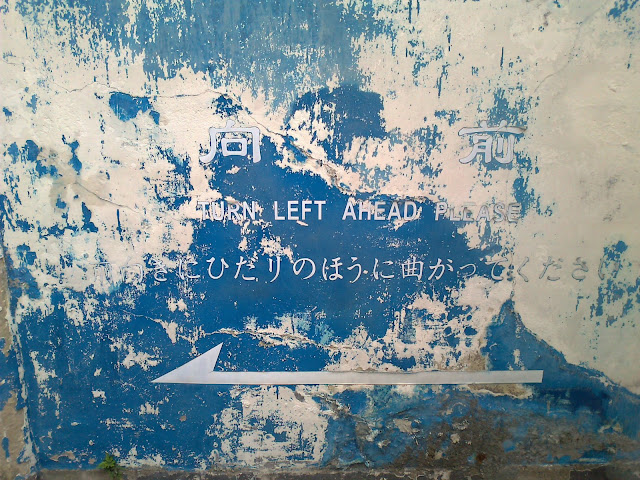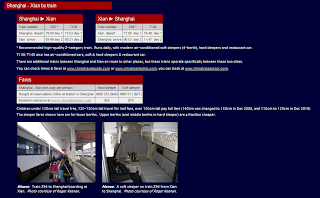Hello, and welcome back to the Yellow River Chronicles. For your information, the YRC is now in it's third week and has not YET been shut down by the PRC authorities. They have however, beaten my VPN (Virtual Private Network) around the head and shoulders, but so far, we are still rolling on the Yellow River.
The most esteemed Evil Princess and I are entering a period of rest and meditation during the hot season in faire Shanghai. Geographically, the 'Hai is at the East China Sea edge of the Yangtze River Valley which means it is very hot and muggy during the summers here.
Fun Facts According to Wikipedia: The Yangtze, Yangzi or Cháng Jiāng ( /ˈjæŋt.si/ or /ˈjɑːŋt.si/; [jɑ̌ŋtsɯ́]) is the longest river in Asia, and the third-longest in the world. It flows for 6,418 kilometres (3,988 mi) from the glaciers on the Tibetan Plateau in Qinghai eastward across southwest, central and eastern China before emptying into the East China Sea at Shanghai. It is also one of the biggest rivers by discharge volume in the world. The Yangtze drains one-fifth of China's land area and its river basin is home to one-third of China's population.[6] Along with the Yellow River, the Yangtze is the most important river in the history, culture and economy of China. The prosperous Yangtze River Delta generates as much as 20% of China's GDP.
/ˈjæŋt.si/ or /ˈjɑːŋt.si/; [jɑ̌ŋtsɯ́]) is the longest river in Asia, and the third-longest in the world. It flows for 6,418 kilometres (3,988 mi) from the glaciers on the Tibetan Plateau in Qinghai eastward across southwest, central and eastern China before emptying into the East China Sea at Shanghai. It is also one of the biggest rivers by discharge volume in the world. The Yangtze drains one-fifth of China's land area and its river basin is home to one-third of China's population.[6] Along with the Yellow River, the Yangtze is the most important river in the history, culture and economy of China. The prosperous Yangtze River Delta generates as much as 20% of China's GDP.
There will be more travel chronicling in the coming weeks, but today we're going to chat about one of the largest, steepest learning curves here on the mainland. No, I'm not talking about crossing the street without becoming a parking spot for a moped carrying 50 megatons of bai shu. Instead, today we are going to chat about learning to bargain. To introduce this key survival skill, I will liberally steal from the Five Stages of Change/Grief/Everything Else. The stages, popularly known in its abbreviated form DABDA, (which sounds like a 80's pop band to me), include:
- Denial — "WTF, dude!", or, "I don't think the heavy stuff is going to come down for quite awhile"
- Anger — "Do they know WHO they are dealing with??"
- Bargaining — "Just let me finish this taco, first"
- Depression — "I think I need to listen to Neil Young."
- Acceptance — "Check, please!"
Almost everything, everywhere is eligible for bargaining here, particularly if it is "street". For example, street vendors of flowers, vegetables, pharmaceuticals, clothing, DVD/CDs, fish, and particularly "antiques" will be opportunities to hone your negotiating skills.
 |
| Hong Kong Vegetable Stand |
The first pass at negotiating can be a bit tough, even if you have actually learned enough Mandarin to understand the numbers. Chinese vendors generally keep a large calculator around (the type corporate marketing types keep around because they have large, easy keyboards). What tends to trip up the average visitor is an innate sense of fair play. Here's how this generally plays out.
Tourist approaches one of the stalls on "Revenge for the Opium Wars" Street, piled high with little Mao statues, fake Chinese officer hats, fake swords, medals, coins, statues, fakes of fake antiques (very hard to detect), chopsticks, and Michael Jackson T-shirts. They point hesitantly at small leather handbag (not a fake, just a handbag).
Tourist: Excuse me, how much is the bag?
Vendor: 800 yuan. What color do you want?
The tourist now begins applying the law of reasonable purchasing: Any counteroffer should begin at a reasonable distance from the offering price so as not to insult the vendor.
Tourist: Oh, the red would be nice. (Calculates fair price in U.S. dollars and deducts 20% or gets lost in calculation. The brave ones will go deep. Let's say we have a brave one here.) Would you take 500 yuan?
Vendor: (Sound of steel trap closing). This is good quality. 700 yuan.
The tourist is now caught in law number two: Once a price has been exchanged, it is an insult to leave the stand without buying something. More calculations are made. More small steps in price on both sides. As this winds to its inevitable conclusion, after some further haggling, the bag is sold for around 600 yuan, or around 90 dollars.
 |
| Yu Gardens Shopping Area, Shanghai |
Now, a confession. Evil Princess and I landed in Shanghai and we must have had signs around our necks that said "CHEAT ME!!". We were cheated buying chopsticks. We were cheated buying bowls. We were ROBBED buying tea. We got massacred buying incense near a temple. We were sold street food at 5X the normal price. We went through the five steps on a regular basis, lingering in depression when we learned how much we had been cheated. Then, help arrived. Not in form of a 12-step program. Noooo, we went to one of the fake markets with a Master. This is the way it went. This is the truth, I promise. The actual purchased article was different but the bid ratios are the same to protect the innocent. While the Master was in the process of violating all of the laws of reasonable purchasing, I attempted to hide in a booth across the way where I almost paid 8 times the going rate for a green laser pen out of sheer embarrassment.
Master: How much for this bag?
Vendor: 800 yuan.
Master: (Incredulous). 800? Come on.
Vendor hands the Master a calculator where he can enter his price. Master looks at bag, thinks a moment and enters (hold for dramatic pause) .............60! Vendor lets out a small whimper, shakes head and hands calculator back to Master.
Vendor: Please, enter your real, final price.
The Master punches in 65. Vendor responds with 400, final price. Master returns bag, profusely thanks the vendor and heads down the hallway.
Master: (Over shoulder) Thank you!
Vendor pursues Master a few feet. 300!
Master: (Accelerating). No, its okay. Thank you.
Vendor waits until Master gets 20 feet away, goes and grabs him and brings him back to store. I pretend to be studying some fake software, in no way associated with the Master. "Crazy foreigner" I say cheerfully to the software store owner who is watching this closely.
Vendor: 200! Final price.
Master offers 70 and departs. By the time he reaches the same 20 feet away, the vendor says, "Okay! Okay, 75!" The Master completes his purchase and looks for fresh meat.
 |
| Shanghai Shopping Action |
Armed with this training, Evil Princess and I proceeded to get thrown out of numerous stores. Apparently, the level of discount from original offering price is different based on venue/establishment. We had migrated from a position of uninformed incompetence to informed incompetence. There are actually rules, man. This isn't Nam. Here are our current rough starting points.
Street Markets:
Fake markets: A tenth of the offering price.
Flowers: A third to a half.
Clothing: A third to a half.
Electronics: DO NOT BUY FROM STREET VENDOR!
Vegetables: 75% of initial price.
Non Street
Stores: Generally full price to around a 10% discount, sometimes.
Restaurants: Prices are published, no negotiation.
These are all subject to the dreaded Mandarin Exception Rule, which is, anything can be an exception. The general guideline is be sure to ask and be an informed consumer. It has been our experience that it is considered perfectly okay for a seller to ask an extremely high price if the person is wealthy enough to pay it. Prices are wealth adjusted, so to speak. All foreigners in Shanghai are considered wealthy, so we always get the high starting price. But, don't worry. If you come to visit, we will take you for negotiation training, which involves going through the five stages rapidly, staying calm and buying a watermelon for 16 cents. And I tell you what, I am soooo looking forward to buying a car when we get back.




































